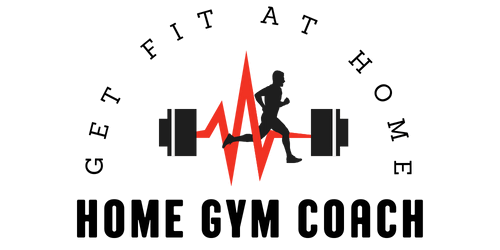So, you’ve created your own custom workout plan and you’re excited to get started on your fitness journey. But now comes the important question: how do you track your progress? Keeping track of your achievements and improvements is crucial in staying motivated and ensuring that your workouts are effective. In this article, we will explore some practical and effective ways for you to track your progress, allowing you to stay on top of your fitness goals and see just how far you’ve come. From measuring your body composition to using workout logs and tracking apps, you’ll have all the tools you need to monitor your progress and celebrate your accomplishments along the way.

Setting Goals
Identify your fitness goals
When starting a custom workout plan, it’s essential to first identify your fitness goals. What is it that you want to achieve through your workouts? Whether it is to lose weight, gain muscle, improve cardiovascular endurance, or enhance flexibility, having a clear understanding of your goals will help you stay focused and motivated.
Establish specific and measurable targets
Once you have identified your fitness goals, it’s important to establish specific and measurable targets. Instead of setting broad goals like “lose weight” or “get stronger,” break them down into smaller, more achievable targets. For example, you can set a goal to lose 10 pounds in three months or increase your bench press weight by 20 pounds in six weeks. Specific targets will give you a clearer direction and allow you to track your progress more effectively.
Break down long-term goals into short-term goals
To make your fitness journey more manageable and less overwhelming, break down your long-term goals into short-term goals. Short-term goals can be weekly or monthly targets that contribute to your overall objective. By focusing on these smaller milestones, you can track your progress more frequently and feel a sense of accomplishment along the way. Breaking down long-term goals into short-term goals also enables you to make adjustments to your custom workout plan as needed.
Choosing the Right Metrics
Select metrics aligned with your goals
When tracking progress in your custom workout plan, it’s essential to select metrics that align with your goals. Different fitness goals require different metrics to be measured. For example, if your goal is to build strength, you may want to track the maximum weight you can lift for specific exercises. If weight loss is your main objective, metrics such as body weight and body fat percentage will be more relevant. Selecting the right metrics will give you a clear indication of whether you’re moving in the right direction.
Consider tracking strength and endurance
Strength and endurance are fundamental components of fitness. If your goal is to improve these areas, tracking your progress in terms of strength and endurance is crucial. You can measure your strength by regularly testing your maximum weight lifted in exercises like squats, deadlifts, or bench presses. Endurance can be assessed through timed exercises like planks or running intervals. By monitoring your strength and endurance, you can gauge improvements and adjust your workout plan accordingly.
Include body composition and flexibility metrics
Body composition and flexibility are often overlooked but important aspects of overall fitness. Including metrics related to body composition, such as body weight and body fat percentage, allows you to understand changes in your body composition as you progress. Flexibility metrics, on the other hand, can be measured through tests that assess your range of motion in various joints. By tracking these metrics, you can ensure that your custom workout plan is not only improving strength and endurance but also overall body composition and flexibility.

Tracking Workouts
Record exercise details
To track progress in your custom workout plan, it’s crucial to record exercise details. This includes the exercises you performed, the sets and repetitions completed, and the weight or resistance used. By keeping a record of these details, you can monitor your performance over time and identify any patterns or trends. Additionally, recording exercise details promotes accountability and consistency in your workout routine.
Monitor training volume and intensity
Tracking your training volume and intensity is essential for optimizing progress in your workout plan. Training volume refers to the total amount of work performed, which can be measured by multiplying the number of sets, repetitions, and weight lifted. Intensity, on the other hand, relates to the level of effort exerted during a workout. By monitoring both volume and intensity, you can ensure that you’re gradually increasing the challenge of your workouts and making consistent progress.
Utilize workout logs or mobile apps
To streamline the tracking process, consider using workout logs or mobile apps designed for tracking workouts. These tools provide a convenient and organized way to record and analyze your progress. Workout logs can be traditional pen-and-paper journals or digital templates, while mobile apps offer features like exercise libraries, timers, and progress graphs. Choose a tracking method that suits your preferences and allows you to easily monitor your workouts.
Using Performance Indicators
Focus on objective measures
When tracking progress in your custom workout plan, it’s important to focus on objective measures. Objective measures refer to quantifiable data that can be easily assessed and tracked. Examples of objective measures include the weight lifted, the number of repetitions completed, or the time taken to complete a specific exercise. By focusing on objective measures, you can eliminate subjective factors and track your progress more accurately.
Track improvements in strength and endurance
Strength and endurance are key indicators of progress in any fitness routine. By regularly monitoring your strength and endurance levels, you can identify improvements and make adjustments to your workout plan accordingly. For strength, track your ability to lift heavier weights or perform more challenging exercises. For endurance, note how long you can sustain cardiovascular activities or complete muscular endurance exercises. Tracking these improvements will help you stay motivated and gauge the effectiveness of your workouts.
Measure progress in speed and distance
If your custom workout plan involves activities like running, cycling, or swimming, measuring progress in terms of speed and distance is essential. By recording the time taken or the distance covered during each session, you can track your improvements over time. Pushing yourself to run faster or longer distances will help you achieve your goals and monitor your progress. Remember, progress may not always be linear, so be patient and trust the process.

Assessing Body Composition
Measure and track body weight
One of the most common metrics for tracking progress in a custom workout plan is body weight. Regularly measuring and tracking your body weight can provide insights into changes in body composition. However, it’s important to remember that body weight alone doesn’t paint the full picture. Factors like muscle gain, water retention, and menstrual cycles can influence body weight fluctuations. Therefore, it’s crucial to consider body weight alongside other metrics for a more comprehensive assessment of progress.
Monitor changes in body fat percentage
To gain a more accurate understanding of changes in body composition, monitoring your body fat percentage is essential. Body fat percentage reflects the proportion of fat in your body compared to other tissues, such as muscle and bone. Measuring body fat percentage can be done using various methods, including skinfold calipers, bioelectrical impedance devices, or DEXA scans. By tracking changes in body fat percentage, you can determine whether your workout plan is effectively reducing body fat and increasing lean muscle mass.
Consider using waist circumference
In addition to body weight and body fat percentage, waist circumference can be a useful metric for assessing progress in your custom workout plan. Measuring your waist circumference regularly can provide insights into changes in abdominal fat, which is associated with an increased risk of certain health conditions. A decrease in waist circumference can signify progress in reducing excess body fat around the midsection. Remember to measure your waist in the same location each time and consider waist circumference alongside other metrics for a comprehensive evaluation.
Evaluating Cardiovascular Fitness
Perform regular cardio assessments
Evaluating your cardiovascular fitness is crucial for tracking progress in your custom workout plan. Regularly performing cardio assessments, such as timed runs or endurance tests, can provide you with objective measures of your cardiovascular endurance. For example, you can time yourself running a mile or completing a set distance on a stationary bike. By repeating these assessments periodically, you can monitor improvements in your cardiovascular fitness and adjust your workouts accordingly.
Use heart rate monitoring during workouts
Another effective way to assess cardiovascular fitness is by using heart rate monitoring during workouts. By wearing a heart rate monitor or using fitness trackers with built-in heart rate monitors, you can track your heart rate throughout your workouts. Monitoring your heart rate allows you to gauge the intensity of your exercises and ensure that you’re reaching and maintaining an optimal level of exertion. Over time, you may notice that your heart rate is lower during similar workouts, indicating improved cardiovascular fitness.
Measure and track VO2 max
VO2 max, also known as maximal oxygen consumption, is considered the gold standard measure of cardiovascular fitness. It represents the maximum amount of oxygen your body can utilize during intense exercise. While professionals often conduct lab tests to determine VO2 max accurately, estimating it through field tests can still provide valuable insights. Field tests like the Cooper 12-Minute Run or the Rockport Walk Test can give you a rough estimate of your VO2 max. Tracking changes in your estimated VO2 max can help monitor improvements in your cardiovascular fitness over time.

Assessing Muscular Strength and Endurance
Utilize strength tests for major muscle groups
When evaluating progress in muscular strength, utilizing strength tests for major muscle groups is essential. These tests typically involve exercises that target large muscle groups, such as the chest, back, legs, and shoulders. For example, assessing your bench press maximum or your deadlift maximum can provide a clear measure of your upper body and lower body strength, respectively. By periodically testing your strength, you can track improvements, identify any muscle imbalances, and modify your custom workout plan accordingly.
Track improvements in maximum weight lifted
A straightforward way to track progress in muscular strength is by monitoring improvements in the maximum weight lifted. Whether it’s dumbbells, barbells, or resistance machines, note the maximum weight you can lift for each exercise. By gradually increasing these weights over time, you can ensure that your muscles are constantly challenged and adapting. Tracking improvements in maximum weight lifted provides tangible evidence of increased muscular strength and can motivate you to push beyond your previous limits.
Monitor muscular endurance with timed exercises
Muscular endurance is the ability of your muscles to exert force over an extended period. To assess and monitor improvements in muscular endurance, incorporate timed exercises into your fitness routine. These exercises can include plank holds, wall sits, or push-ups performed in a set amount of time. Record the duration or repetitions achieved and strive to increase your performance in subsequent sessions. Monitoring your progress in muscular endurance will help you gauge the effectiveness of your custom workout plan in improving this aspect of fitness.
Tracking Flexibility
Incorporate flexibility tests into your routine
Flexibility is often overlooked but plays a significant role in overall fitness and injury prevention. To track progress in flexibility, incorporate flexibility tests into your routine. These tests can assess your range of motion in various joints, such as the hips, shoulders, and spine. For example, the sit-and-reach test measures hamstring and lower back flexibility, while the shoulder flexibility test assesses the range of motion in your shoulders. Regularly perform these tests and record your results to monitor improvements in your flexibility over time.
Record improvements in range of motion
To gauge progress in flexibility, record improvements in your range of motion. Range of motion refers to the extent that a joint can move in different directions. Whether it’s touching your toes, performing a full squat, or reaching your arms overhead, keep track of how far you can comfortably move. By tracking your range of motion, you can assess improvements and identify areas that require more attention. In addition to flexibility tests, monitoring improvements in range of motion during exercises included in your workout plan can also be informative.
Utilize stretching techniques and yoga poses
To enhance flexibility and track progress in your custom workout plan, incorporate stretching techniques and yoga poses. Static stretches, dynamic stretches, and yoga poses can all contribute to improved flexibility. Make a habit of incorporating these activities into your warm-up or cool-down routines. Pay attention to the changes in your flexibility as you consistently practice these techniques. By gradually progressing to more challenging stretches and poses, you can continue to improve your flexibility and track your progress along the way.
Monitoring Recovery and Rest
Assess quality of sleep and rest days
Recovery and rest play a crucial role in achieving your fitness goals. Monitoring the quality of your sleep and the number of rest days taken can help ensure that you’re allowing your body to recover adequately. Aim for a consistent sleep schedule and prioritize good sleep hygiene practices. Additionally, listen to your body and take rest days as needed, allowing your muscles and nervous system time to repair and rebuild. By monitoring your recovery and rest patterns, you can optimize your performance and progress in your custom workout plan.
Listen to your body for signs of overtraining
While consistency is important in any workout plan, it’s equally crucial to listen to your body and recognize signs of overtraining. Pushing yourself too hard without adequate rest and recovery can lead to fatigue, decreased performance, and increased risk of injury. Be mindful of symptoms like constant fatigue, sleep disturbances, decreased motivation, or persistent muscle soreness. If you experience any of these signs, adjust your workout plan, incorporate more rest days, or seek guidance from a qualified fitness professional.
Record improvements in workout performance
An effective way to track progress in your custom workout plan is by recording improvements in your workout performance. This can include factors such as increased weight or repetitions in strength exercises, faster running times, or higher levels of endurance during cardiovascular activities. By consistently tracking and comparing your performance across workouts, you can identify patterns of improvement and adjust your custom workout plan accordingly. Celebrate these improvements as they indicate progress towards your fitness goals.
Analyzing and Adjusting
Regularly review and analyze progress data
To ensure that your custom workout plan remains effective, it’s important to regularly review and analyze the progress data you’ve recorded. This can involve reviewing your workout logs, assessing changes in body composition and other metrics, and reflecting on your overall performance. Analyzing your progress data allows you to identify areas of improvement and areas where you may be experiencing stagnation. By understanding your strengths and weaknesses, you can adjust your workout plan to optimize your progress.
Identify areas of improvement and stagnation
As you review and analyze your progress data, identify areas of improvement and areas where you may be experiencing stagnation. This could involve recognizing muscle groups that require more focus, exercises that need modification, or cardiorespiratory activities that need variation. On the other hand, identifying areas where progress has stagnated can help you reassess your approach and make necessary adjustments. Monitoring both improvement and stagnation allows you to maintain a balanced and effective workout plan.
Make adjustments to your custom workout plan
Based on your analysis of progress data and identification of areas for improvement and stagnation, make necessary adjustments to your custom workout plan. This could involve changing the exercises, increasing or varying the intensity, altering the training volume, or adding new elements like plyometrics or interval training. Adapting your workout plan ensures that you continue making progress and maintain motivation. Consider consulting with a fitness professional to guide you in making appropriate adjustments that align with your goals and abilities.
In conclusion, tracking progress in your custom workout plan is essential for staying motivated, monitoring improvements, and making necessary adjustments. By setting clear goals, selecting the right metrics, tracking workouts, using performance indicators, assessing body composition, evaluating cardiovascular fitness, assessing muscular strength and endurance, tracking flexibility, monitoring recovery and rest, and analyzing and adjusting your plan, you can optimize your progress and achieve your desired fitness outcomes. Remember to approach tracking progress with consistency, patience, and a positive mindset, and enjoy the journey towards a healthier, fitter you.


